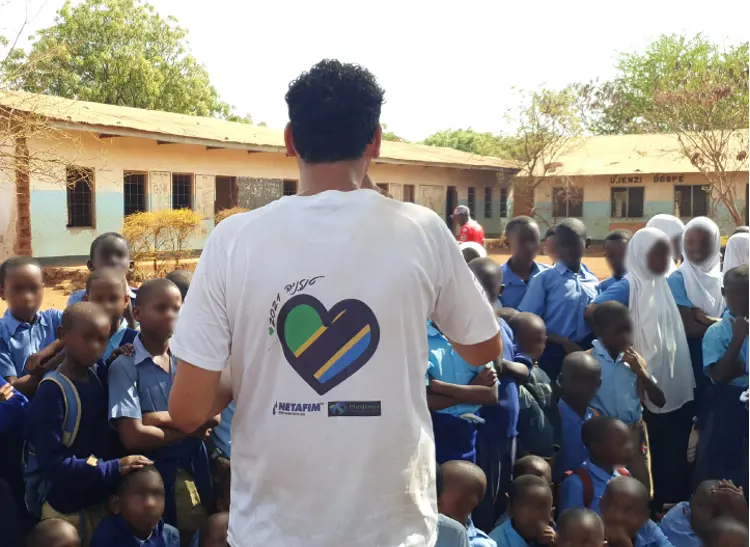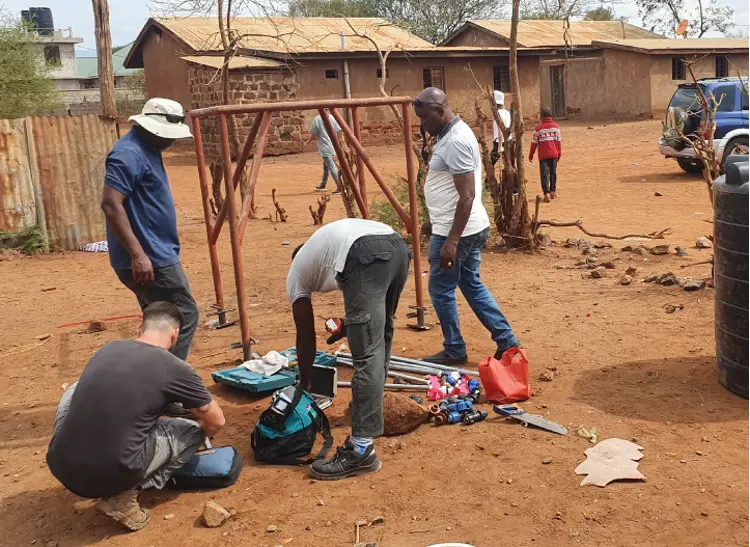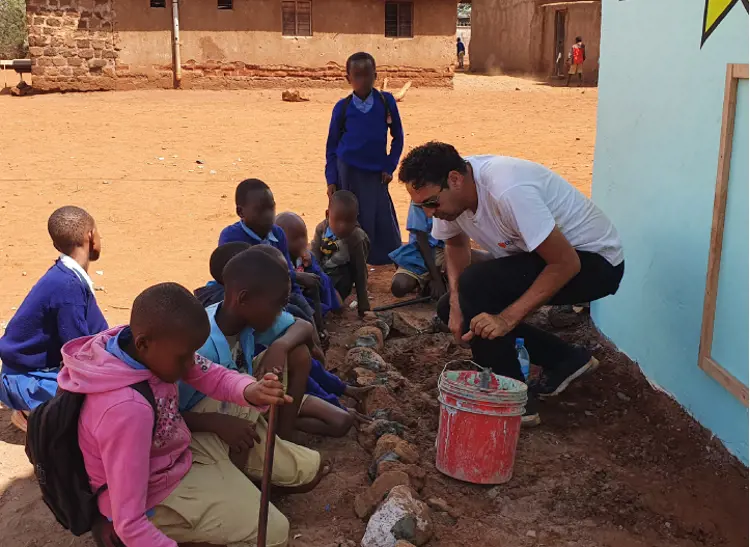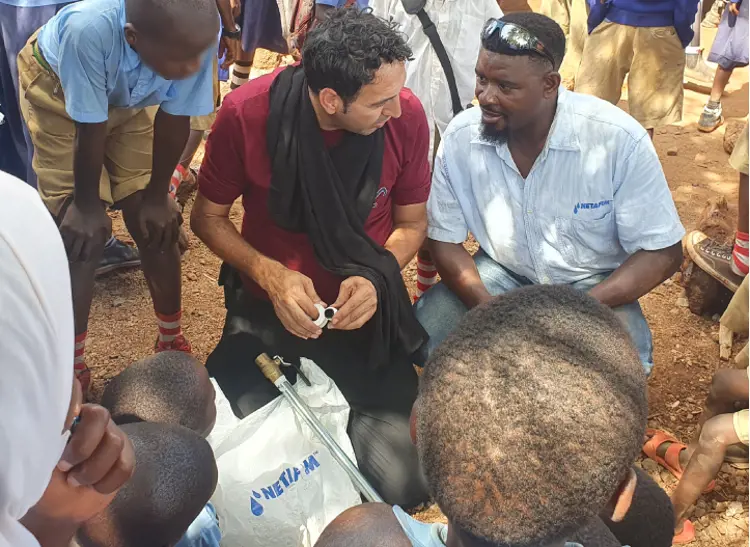My life changing vacation in Tanzania
As the Community Relations and Volunteering Manager at Netafim Israel, I am privileged that my work and my passion for impacting society are in sync. Netafim’s commitment to social responsibility, applying its innovation and creativity to strengthen and empower the community and its weaker links is a principle that I have fully related to during my 25 years at the company and am now responsible for putting into action.
This synchronization of values reached new heights just a few weeks ago when I embarked on an experience of a lifetime to make a difference in my own personal capacity, separate from my day job.

Preparing For My Dream Vacation
After years of hard work, I was ready for a vacation. As one who finds relaxation in adventure, the only question was what it would look like. I found my answer in a program which sends delegations of volunteers from Israel to Africa to work for 2 weeks, helping to improve living conditions.
Our destination? A small village in Tanzania called Hamo, 2 hours from the Kilimanjaro airport.
Our mission? Teaching in and making physical improvements to the local school.
With 2 months to prepare, the 40 delegation members quickly came up with a plan and divided into committees in order to conquer. I chose to be on the renovations committee, taking responsibility for overhauling the water situation in the school. In addition to gathering materials and equipment to bring, I consulted with Netafim reps in Tanzania and arranged to meet with them at the school.
After 2 months of determined work, we were ready for our mission.

The Stark and Dry Reality
We were greeted at the school with a most festive welcome by the 800 students! Despite obvious language barriers, we were moved by their songs, their faces, and their palpable appreciation for our visit.
It didn’t take me long to assess the existing water infrastructure in the school; there was one faucet. One faucet, provided by the government, for 800 students plus teaching staff. One faucet, connected to one water tank, which was filled only 3 times a week from the well. One faucet that was locked and only opened in the afternoons – to be greeted by long lines and, at some point, went dry. As I later learned, the one tank to which the one faucet was attached had a leak, causing a significant percentage of the coveted water to go to waste, seeping into the dry, vegetation-less ground.
At our hotel, the water situation was only a bit better. Every morning, each guest was handed 2 bottles of 3 liters to last the day – for drinking, cooking, cleaning. In comparison to the situation in the school, however, this almost seemed luxurious.

Learning goes both ways
We started our mornings at the school, teaching a pre-planned lesson to students. My topic of choice was sustainability, focusing specifically on, you guessed it, water! I showed them the globe and its composition of dry land versus water and explained how much of that water is drinkable. These visuals drove home the point that without water there cannot be life and emphasized the importance of optimizing every drop.
Each lesson also included an activity to reinforce the message of sustainability. As disposable bottles are a rare commodity in the village, I had saved the delegation’s daily water bottles to use as materials to teach about plant drip irrigation. The idea was for the students to cut the bottles, put in dirt and seeds, and use drops of water to help the plants grow.
Well, it seems that I was particularly successful in making my message of sustainability relevant, rather than using the drip irrigation models to grow plants, the students dripped water into their mouths. In a place where water is a scarce resource, they did indeed use the drip for sustainability - to keep themselves hydrated!

Where Faucets are the Best Legacy
The Netafim Africa staff worked in the school for almost a week, completely overhauling and computerizing the water system in the school to meet the needs of the staff and students. Netafim installed 2 large, new water tanks (one of 2000 liters and the other of 1000 liters), new pumps, and four new faucets, including one in the kitchen. We planted a vegetable garden as a sustainable food source to feed the children, as well as a “green wall”; a decorative, vertical garden at the entrance to the school all using recycled water via Netafim’s precision irrigation products and optimizing each drop. And, not only did we fix the leak in the tank, but we also installed new basins to collect the overflow of water, which was recycled and funneled into drip irrigation for the gardens.
A lasting legacy in Hamo? Yes! The new water infrastructure is there to stay, and, having partnered with the students and staff each step of the way in the planning, building, and planting the gardens, they were invested from the get-go and are dedicated to the preservation and growth of the fruits of their labor. We can say with confidence that, as a result of Netafim, life was returned to the school for the long haul.
And my fellow members of the delegation? Each volunteer left an indelible imprint on the school and students in Hamo, yet the installation of the new water infrastructure was, undeniably, our most important contribution. Not only did we leave behind new sources of much-needed water but also an awareness of sustainability, using each drop of water in the most precise and efficient way. This proved to be a lesson internalized not only by the Hamo natives but by the entire delegation, a lasting legacy all around.
For me, personally, this trip was a dream vacation come true. It took my passion for social responsibility to new heights and reinforced the idea that each seemingly small act, every “drop” that we take as individuals, and even more so as a group, has the potential to create ripple effects which truly transform lives.

Comments
We'd love to hear your thoughts! To enter a comment, type your name and email address.